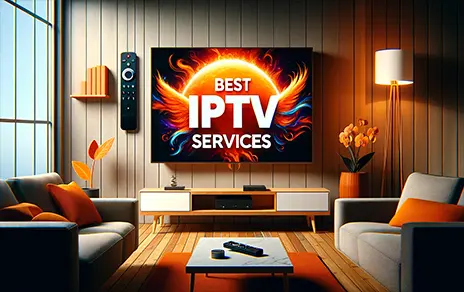In a world where technology is continually evolving, television has undergone significant transformations. One of the most revolutionary developments in recent years is the advent of IPTV (Internet Protocol Television) scandinavia iptv. Unlike traditional cable or satellite TV, IPTV uses the internet to deliver television programming, offering a new level of flexibility and convenience for viewers. This article explores the rise of IPTV, its benefits, and its impact on the television landscape.
What is IPTV?
IPTV stands for Internet Protocol Television, a system where television services are delivered using the internet protocol suite over a packet-switched network such as the internet, instead of being delivered through traditional terrestrial, satellite signal, and cable television formats. IPTV services may include live television, video on demand (VOD), and interactive TV.
The Growth of IPTV
The popularity of IPTV has surged in recent years, driven by the widespread availability of high-speed internet and the increasing demand for on-demand content. According to industry reports, the global IPTV market is expected to reach new heights, with millions of households subscribing to IPTV services. This growth is fueled by several factors, including the increasing number of internet users, the rise of smart TVs, and the shift towards digital media consumption.
Benefits of IPTV
1. Flexibility and Convenience: One of the biggest advantages of IPTV is its flexibility. Viewers can watch their favorite shows and movies on various devices, including smart TVs, smartphones, tablets, and computers. This multi-device compatibility allows users to enjoy content anytime, anywhere, without being tied to a traditional television set.
2. On-Demand Content: IPTV services often include extensive libraries of on-demand content, allowing viewers to choose what they want to watch and when they want to watch it. This feature is particularly appealing in an era where consumers prefer binge-watching entire series rather than waiting for weekly episodes.
3. Interactive Features: IPTV offers interactive features such as pause, rewind, and fast-forward, giving viewers greater control over their viewing experience. Some IPTV services also provide interactive program guides, social networking integration, and personalized recommendations based on viewing habits.
4. Cost-Effective: Compared to traditional cable and satellite TV, IPTV can be more cost-effective. Many IPTV providers offer competitive pricing and customizable packages, allowing viewers to pay for only the channels and services they want.
Challenges and Considerations
While IPTV offers numerous benefits, it also comes with certain challenges and considerations. One of the primary concerns is the reliance on a stable and high-speed internet connection. Without a reliable internet service, viewers may experience buffering, lag, or poor-quality streams.
Another consideration is the legality of IPTV services. While many legitimate IPTV providers operate within the legal framework, there are also illegal services that offer unauthorized access to copyrighted content. Consumers should ensure they subscribe to legitimate IPTV services to avoid legal issues and support content creators.
The Future of IPTV
The future of IPTV looks promising as technology continues to advance and consumer preferences evolve. With the rollout of 5G networks, IPTV services are expected to become even more accessible and efficient, offering higher quality streams and reduced latency. Additionally, the integration of artificial intelligence (AI) and machine learning (ML) is likely to enhance personalized content recommendations and improve the overall user experience.
IPTV is also expected to play a significant role in the convergence of media and entertainment. As traditional television, internet, and telecom services merge, IPTV will be at the forefront of delivering a seamless and integrated entertainment experience.
